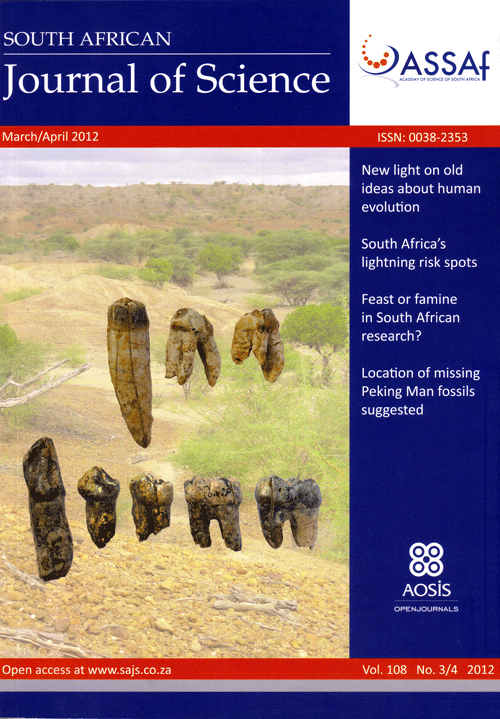New hominin fossils from Kanapoi, Kenya, and the mosaic evolution of canine teeth in early hominins
Keywords:
Australopithecus anamensis, canine tooth roots, canine tooth evolution, hominin evolution, KanapoiAbstract
Whilst reduced size, altered shape and diminished sexual dimorphism of the canine-premolar complex are diagnostic features of the hominin clade, little is known about the rate and timing of changes in canine size and shape in early hominins. The earliest Australopithecus, Australopithecus anamensis, had canine crowns similar in size to those of its descendant Australopithecus afarensis, but a single large root alveolus has suggested that this species may have had larger and more dimorphic canines than previously recognised. Here we present three new associated dentitions attributed to A. anamensis, recently recovered from the type site of Kanapoi, Kenya, that provide evidence of canine evolution in early Australopithecus. These fossils include the largest mandibular canine root in the hominin fossil record. We demonstrate that, although canine crown height did not differ between these species, A. anamensis had larger and more dimorphic roots, more like those of extant great apes and Ardipithecus ramidus, than those of A. afarensis. The canine and premolar occlusal shapes of A. anamensis also resemble those of Ar. ramidus, and are intermediary between extant great apes and A. afarensis. A. afarensis achieved Homo-like maxillary crown basal proportions without a reduction in crown height. Thus, canine crown size and dimorphism remained stable during the early evolution of Australopithecus, but mandibular root dimensions changed only later within the A. anamensis-afarensis lineage, coincident with morphological changes in the canine-premolar complex. These observations suggest that selection on canine tooth crown height, shape and root dimensions was not coupled in early hominin evolution, and was not part of an integrated adaptive package.Published
2012-03-01
Issue
Section
Research Articles
License

All articles are published under a Creative Commons Attribution 4.0 International Licence
Copyright is retained by the authors. Readers are welcome to reproduce, share and adapt the content without permission provided the source is attributed.
Disclaimer: The publisher and editors accept no responsibility for statements made by the authors
How to Cite
Manthi, F., Plavcan, J., & Ward, C. (2012). New hominin fossils from Kanapoi, Kenya, and the mosaic evolution of canine teeth in early hominins. South African Journal of Science, 108(3/4), 9 pages. https://sajs.co.za/article/view/9887
Views
- Abstract 277
- PDF (1MB) 168
- HTML 190
- EPUB 98
- XML 85
- Figure_1 16
- Figure_2 22
- Figure_3 28
- Figure_4 0
- Table 1a 15
- Table 2a 12
- Table 1b 8
- Table 2b 15
- Table3 6
- Table4 35
- Table5 11
- Table6a 17
- Table6b 22












.png)